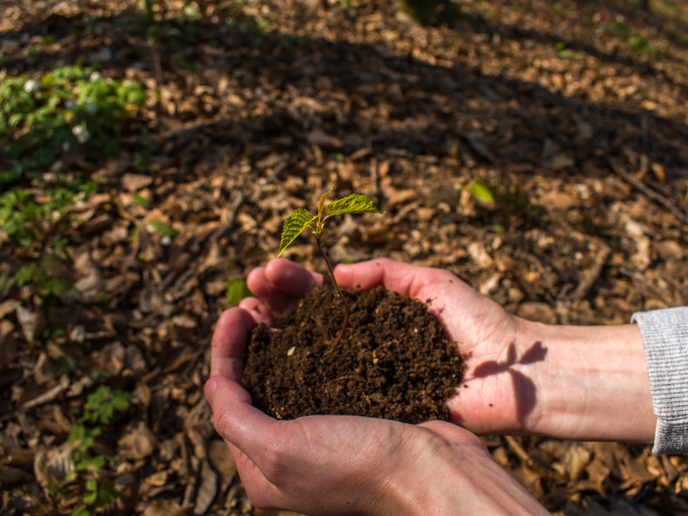Tailored solutions for soil-preserving agriculture across Europe
One of the main predictions of the EU’s Agricultural Outlook for 2019-2030(opens in new window) report is that the total agricultural land area will decline over the next 10 years. This is all due to increasing productivity, but it also begs a question. As we keep asking more from less land, don’t we irremediably risk exhausting soils to a point of no return? To prevent this from happening, the SOILCARE (Soil Care for profitable and sustainable crop production in Europe) project has been considering options to keep European agriculture competitive while reducing its environmental impact. “Europeans increasingly want good quality food that doesn’t negatively impact the environment, and climate change reinforces this need. It’s all about creating sustainable products preserving soils while maintaining profitability,” says Rudi Hessel, researcher at Wageningen Environmental Research specialising in soil erosion and coordinator of the project. The project team strikes this delicate balance with a new concept of soil-improving cropping systems (SICS). The concept is new not only because it considers both sustainability and profitability, but also because of how it considers each of these aspects. Here, profitability is about more than just production volumes, as Hessel notes. “We see profitability as balance of costs and revenues. So, if costs can be reduced, for instance by using fewer fertilisers and chemicals, profitability can remain positive even as production levels somewhat decline.” This is crucial, as past attempts to switch to more sustainable production methods have often resulted in lower productivity. Whilst Europe can afford a slight drop in agricultural output, this can’t be done at the expense of farmers who need to fetch a better price for products of better quality. “We also wanted to avoid restricting our analysis of costs to factors that can be monetised. We extend these to the whole of society as production methods have multiple effects on various ecosystem services. These can be found not only on-site, but also off-site,” Hessel explains. When it comes to sustainability, SOILCARE also uses what the team calls a “truly integral approach”. The latter considers biophysical sustainability of course, but also economic, social and policy factors.
SICS for all
As each country has its own climate-related and socio-economic specificities, the project team selected a total of 16 study sites across Europe to identify promising SICS. These SICS consider available methods such as soil-improving crops, fertilisation, tillage management and solutions preventing soil compaction. In Norway, for instance, the team has been trialling biological compaction release, plant mixes for cover crops, and precision agriculture. Work on the 16 sites is still ongoing, but a methodology to monitor and evaluate the adopted SICS has already been developed. The consortium also conducted a thorough analysis of the impact of policies on SICS adoption and implementation. By the time SOILCARE ends in August 2021, an interactive tool allowing stakeholders to identify the best possible SICS for their needs will be made available. “The tool will combine a land use model with a biophysical model. Users can also simulate the effects of policies. For each category of SICS, we are currently developing maps showing where it is suitable and relevant. We will use these maps as input for the model, which will then, based on local conditions, provide advice on which categories of SICS would be promising,” Hessel adds. To come full circle, the project team is also working on a ‘Report on the selection of good policy alternatives’ at EU and study site level. Three policy briefs(opens in new window) have already been published, and Hessel hopes that the project’s policy recommendations will assist in the development of policies stimulating the adoption of SICS, as well as contribute to the success of other EU initiatives on soil.



